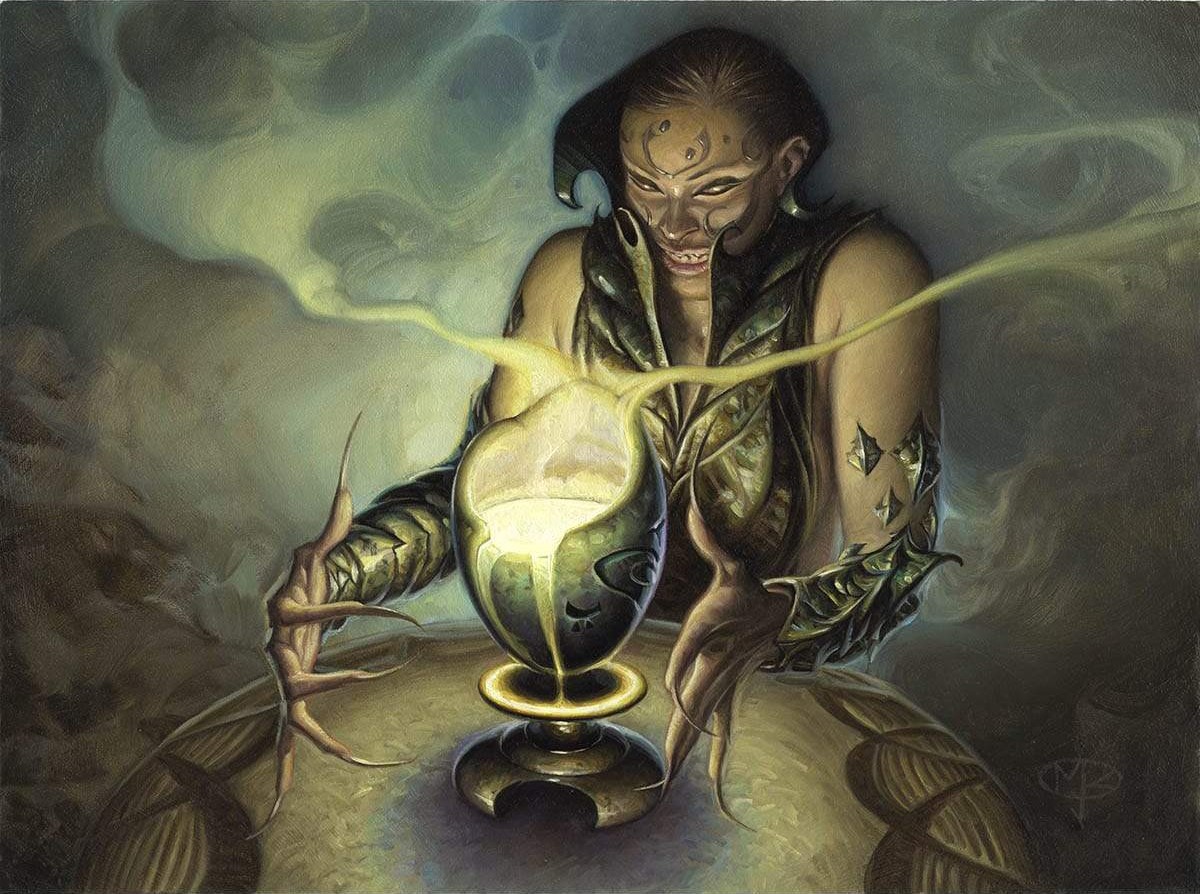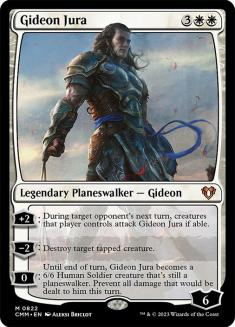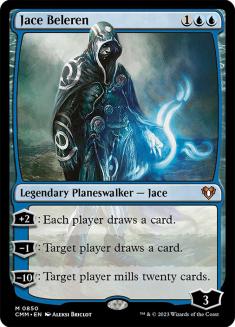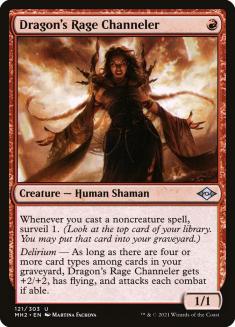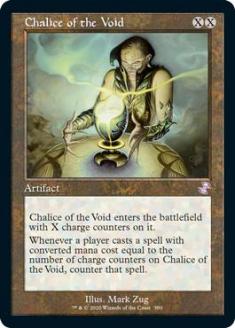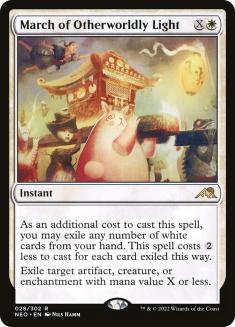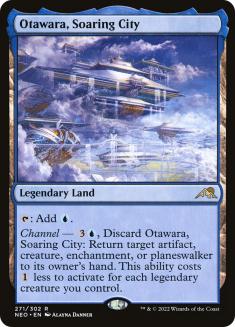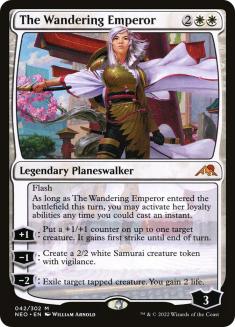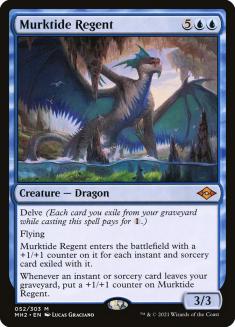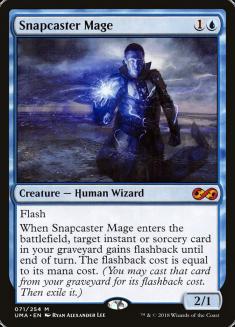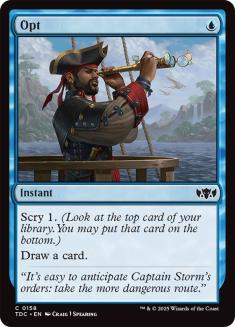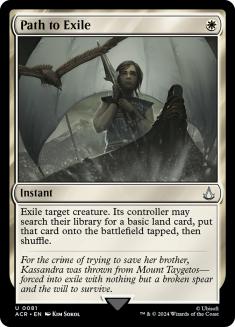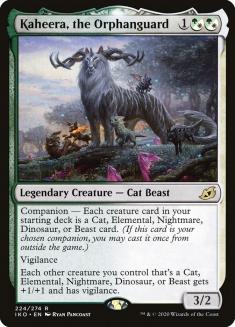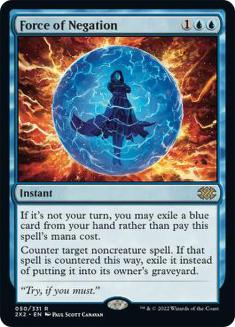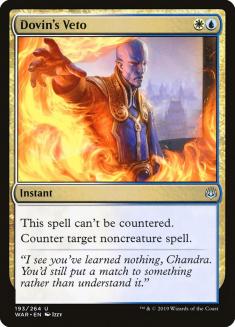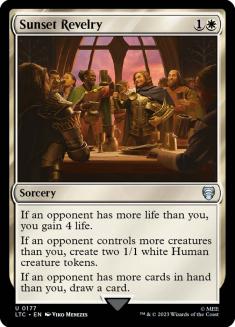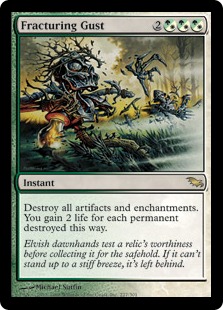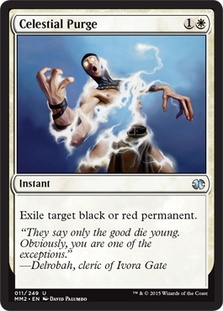Modern has taken over as the most popular competitive format in Magic. This is not a new phenomenon, or an event that occurred out of the blue. It took a lot of production errors and mental missteps to dethrone Standard and the shorter-card-pool formats that surround it. Magic players have shown a great deal of patience with lopsided formats, broken cards, the MTG Arena economy, the dismantling of the road to the Pro Tour, and an avalanche of other competitive play issues. The glue that has held this veteran class of player together was Modern, a format that has consistently provided a robust metagame to a wide audience.
There is much to be said about formats that do not rotate. Many Modern players have had the same deck for years, without much of a need to trade it in for a new one. This is one of the biggest reasons we see a deck like Mono-Green Tron or Infect win an event: a generous dose of luck, health, and stubbornness. I mean no disrespect with this statement, as I have played a similar variation of control in Modern since the format’s inception. There have been breaks for combo decks here and there; however, it was a Grand Prix in 2012 where I went 13-2 and qualified for the Pro Tour with Azorius Control. Since then, the deck has gone through ups and downs, with the format finally settling down a few years ago.
I do not believe Modern needed a ban to create a healthy metagame, but I do agree with the removal of Lurrus of the Dream-Den. This companion is easily the greatest creature in the game’s history and will continue to dominate wherever it is legal. Although decks that ran it were beatable, it took a great deal of planning and graveyard hate. It also created a stress point in deckbuilding, where every aggressive deck was foolish not to incorporate it and playing any color combination that couldn’t was irresponsible. The payoff was tremendous, and it dwindled the deck selection process down to a trivial formula. Modern was great with Lurrus, and it remains great without it.
Lurrus put the most pressure on control decks, making Grixis Death’s Shadow a challenging matchup. I had about a 50% win rate against it; however, many of my sideboard cards were dedicated to defeating it. The constant difficulty was the inevitability of Lurrus hitting the battlefield and producing a powerful threat in the same turn. This line of play often forced me to hold back a removal spell against a Dragon’s Rage Channeler in preparation for the upcoming companion. Without the threat of Lurrus, Azorius Control is back on top of that matchup and the metagame.
The hardest matchups for Azorius Control contained Lurrus, as the deck pushed past midrange, big mana, and combo decks with relative ease. There will still be aggro decks that put pressure on a slow control deck, but with dedicated sideboard slots against them, I am not worried. The same decks will exist in the post-Lurrus metagame.
I do not agree that leaving the other companions was a mistake. Thinking that the aggressive wing of the format will fold and adopt a Four-Color Yorion pile is silly. Yorion, Sky Nomad and Kaheera, the Orphanguard won’t dominate Modern, but we will see the aggressive decks continue to put up numbers. Hardened Scales, Azorius Hammer, Grixis Death’s Shadow, Jund Anvil, red-based aggro, and everything in between will shed Lurrus seamlessly. These decks will put up a fight against the slower decks of the format, but fall slightly short. Azorius Control has continued to be a force with Lurrus around and will again show the competitive world how strong Counterspell is in Modern.
This version of Azorius Control is best-suited to take on the Lurrus-free metagame. New cards have been added, some numbers adjusted, but the core of the deck remains the same. There is a robust discussion centered around the efficacy of Chalice of the Void without Lurrus decks. Just because Lurrus is gone, that doesn’t mean the player base will double their deck’s average mana value. Modern has, and will always be, a format full of cheap spells, making Chalice of the Void remain a lock-down card for a giant swatch of the metagame.
This artifact prevents some opponents from casting spells for the remainder of the game, while stopping key threats in other matchups. There are very few decks where a Chalice of the Void is dead. Even in the control mirrors, I have leaned on Chalice of the Void to shut down two-mana spells once I have exhausted mine. This line of play has occurred often, and similar situations will pop up for Chalice of the Void to be effective.
The rest of the deck continues to focus its white spells on removal, while relying on blue for disruption. Kamigawa: Neon Dynasty provided us some sweet lands and a strong supplementary spell for Prismatic Ending. Right before the ban went into effect, WaToO on Magic Online (MTGO) won a challenge with Azorius Control. He used Otawara, Soaring City and March of Otherworldly Light, as I am in this list.
I also had The Wandering Emperor in my list, but quickly removed it after initial testing. It has been an all-star in the newer formats; however, I found it extremely underwhelming in Modern for the four-mana price tag attached. I am a loyalist to the four-of Teferi, Time Raveler; two-of Jace, the Mind Sculptor; and two-of Teferi, Hero of Dominaria. There may be a day where a single Teferi, Time Raveler is dropped for another Chalice of the Void, or an alternative hate card for aggressive decks, but I am not ready for that shift at this moment.
These new tools continue to embolden Azorius Control, so much so that WaToO dropped a Prismatic Ending in favor of a 3/3 split with March of Otherworldly Light. I cannot condone such an action, but I do believe he is the mad Azorius Control scientist who continues to find success with any build he submits in a tournament.
Azorius Control, especially with Chalice of the Void, will thwart any resurgence attempt by Murktide Regent. In the discourse of the Modern metagame, this is another popular topic that I have been following. Jeskai / Izzet Murktide decks were eradicated by their inability to include Lurrus in their grand plan. With that blockade removed, there are some hopeful mages who plan to cantrip their way to blue Dragon glory once again.
This was always a good matchup for control players, especially when the Murktide players did not have exactly Ragavan, Nimble Pilferer on Turn 1. Even if they did, their winning strategy would fall apart if the control user had an answer for it. The white-based removal, instant-speed interactions, and Teferi, Time Raveler combined to make the matchup very difficult for the Jeskai / Izzet Murktide opponent. These advantages, piled on a lack of threats, created a stalemate that control always won.
This version of Azorius Control will continue to have the answers for big mana decks while being able to effectively answer Urza’s Saga. Spreading Seas has become a staple in control decks, cantripping for us while squashing manabases for them. I still don’t miss older staples Opt, Snapcaster Mage, and Path to Exile. They feel like relics of the past whenever I dust them off and get them into the testing ring.
Chalice of the Void is not the reason for the death of one-mana spells and Snapcaster Mage. The world has simply changed, forcing Azorius Control to adapt or fall into irrelevance. If an Urza’s Saga, valuable shockland, or an Urza’s Tower appears, Spreading Seas does the necessary effect and assists with land drops. When a must-kill Ragavan leaps onto the battlefield, a Path to Exile is one of the last removal spells I want to dispatch it.
Control has dominant planeswalkers, dynamic blue-disruption, and excellent white-based removal, allowing it to finally start operations on Turn 2. There is no harm to having the first spell take place with two lands, while having Solitude, March of Otherworldly Light, and Prismatic Ending as insurance for a must-answer spell on Turn 1. The metagame has not changed much over time, but the effectiveness of control’s disruption has. With spells like these, we can afford to wait.
I hate to brag, but we still have Kaheera and that is not insignificant. For those who have played their fair share of Azorius Control, you know how often this companion becomes relevant. It pumps and pitches to Solitude, and now assists March of Otherworldly Light. I also cast Kaheera constantly, offering protection or applying pressure. On paper, it looks like a mediocre dud that takes up a sideboard slot, but that is simply not the case. I would argue that it is now the most relevant companion in Modern, even though Yorion is getting all the press. Azorius Control may be the only deck using it, which shows how strongly I believe in this deck’s strength in the current metagame.
The rest of the sideboard has shifted to handle the wide array of decks that will seek to dethrone Azorius Control. Force of Negation, Mystical Dispute, and Dovin’s Veto continue to see their numbers shift in expectation of certain matchups. Each counterspell is great in the mirror, but their applications against non-control decks vary.
The strongest blue disruption spell in the sideboard is easily Aether Gust, which gets around spells that cannot be countered, while hitting aggressive red creatures at the same time. I never regret running Aether Gust, as it continues to save me from dire situations. The last card that assists in slow matchups is the third Shark Typhoon, which is often the game-decider in the mirror. It not only cranks up the win percentage in that category, it also blocks pro-white creatures, something Azorius Control is very bad at doing, and helps against combo decks that punish tapping out. I never thought Shark Typhoon was going to be a Modern superstar, but it continues to overperform in each event.
The other half of the sideboard helps against the upcoming wave of Lurrus-less aggro decks. The third Chalice of the Void and Supreme Verdict are musts, as they are the best cards against many aggro decks. I added back Sunset Revelry, as a one-of for now, to assist with a possible return of red-based aggro. Chalice of the Void and Solitude are great against red-based aggro; however, there are some starts that require a quick burst of life. Sunset Revelry is fantastic in that scenario and our strongest silver bullet against decks still casting Goblin Guide.
The Celestial Purge and Fracturing Gust have specific matchups in mind, but the former is much more versatile. Although Lurrus has left Modern, red and black targets will exist, making Celestial Purge worth keeping around. Fracturing Gust may also go up to two copies, depending on the popularity of Azorius / Orzhov Hammer. Chalice of the Void and removal are great against them; however, some starts require the catch-up mechanic that Fracturing Gust provides.
Time will tell, but for now Azorius Control is at the top of the power-level department, making it one of the best options for a Lurrus-free Modern.

